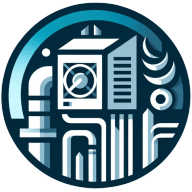Welcome to a comprehensive guide on integrating smart thermostats into your HVAC system. This blog post will delve into the benefits, the process, and the future of smart thermostat integration. We'll explore how this technology can enhance your comfort, save energy, and make your life easier.
Understanding Smart Thermostats
A smart thermostat is a device that controls heating, ventilation, and air conditioning (HVAC) systems in homes or commercial buildings. It's not just a thermostat; it's a smart device that learns from your habits and adjusts accordingly to provide optimal comfort and energy efficiency.
Smart thermostats offer a range of features that traditional thermostats lack. They connect to the internet, allowing you to control your HVAC system remotely from your smartphone or computer. Some models even use artificial intelligence to learn your schedule and preferences, automatically adjusting the temperature for maximum comfort and efficiency.
Another significant advantage of smart thermostats is their ability to provide detailed energy usage reports. These reports can help you understand your energy consumption patterns and make informed decisions to reduce your energy bills.
The Benefits of Smart Thermostat Integration
Integrating a smart thermostat into your HVAC system can offer numerous benefits. For starters, it can significantly improve your home's energy efficiency. By learning your schedule and adjusting the temperature accordingly, a smart thermostat can reduce unnecessary heating or cooling, saving you money on energy bills.
Smart thermostats also offer unparalleled convenience. With a smart thermostat, you can control your HVAC system from anywhere using your smartphone. This means you can adjust the temperature while you're away from home, ensuring you return to a comfortable environment.
Furthermore, smart thermostats can enhance your home's comfort. They can maintain a more consistent temperature than traditional thermostats, reducing hot and cold spots in your home. Some models can even detect when you're on your way home and adjust the temperature accordingly, ensuring your home is at the perfect temperature when you arrive.
The Process of Integrating a Smart Thermostat
The process of integrating a smart thermostat into your HVAC system can vary depending on the specific model of the thermostat and the type of HVAC system you have. However, the general process typically involves the following steps.
First, you'll need to remove your old thermostat. This usually involves unscrewing it from the wall and disconnecting the wires. It's important to note the function of each wire, as you'll need to connect them to the smart thermostat.
Next, you'll need to install the smart thermostat. This involves connecting the wires to the appropriate terminals on the thermostat, then attaching the thermostat to the wall. Most smart thermostats come with detailed installation instructions, and some even offer online video tutorials.
Once the smart thermostat is installed, you'll need to connect it to your home's Wi-Fi network. This allows you to control the thermostat remotely from your smartphone or computer. You'll also need to install the thermostat's mobile app on your smartphone, which you'll use to adjust the temperature and settings.
Finally, you'll need to configure the smart thermostat. This involves setting your preferred temperatures for different times of the day and week. Some smart thermostats can learn your schedule and preferences over time, automatically adjusting the temperature for maximum comfort and efficiency.
Potential Challenges and Solutions
While integrating a smart thermostat into your HVAC system can offer numerous benefits, it's not without potential challenges. One common issue is compatibility. Not all smart thermostats are compatible with all HVAC systems, so it's important to check the compatibility before purchasing a smart thermostat.
Another potential challenge is the installation process. While many smart thermostats are designed for easy installation, some people may find the process challenging. If you're not comfortable installing the thermostat yourself, you can hire a professional to do it for you.
Lastly, some people may have concerns about the security of smart thermostats. Like any internet-connected device, smart thermostats could potentially be hacked. However, most smart thermostat manufacturers take security very seriously and implement strong security measures to protect your data.
The Future of Smart Thermostat Integration
The future of smart thermostat integration looks promising. As technology continues to advance, we can expect smart thermostats to become even smarter and more efficient.
One potential development is the integration of smart thermostats with other smart home devices. For example, a smart thermostat could potentially communicate with your smart blinds, automatically closing them when the sun is shining to reduce heat gain and save energy.
Another potential development is the use of artificial intelligence to further improve energy efficiency. For example, a smart thermostat could use machine learning algorithms to predict your schedule and adjust the temperature accordingly, even if your schedule varies from day to day.
Making the Switch to a Smart Thermostat
If you're considering integrating a smart thermostat into your HVAC system, there are a few things to keep in mind. First, consider your needs and preferences. Do you want a thermostat that learns your schedule and adjusts the temperature automatically, or would you prefer to control the temperature manually?
Next, consider the compatibility of the smart thermostat with your HVAC system. Not all smart thermostats are compatible with all HVAC systems, so it's important to check the compatibility before making a purchase.
Finally, consider the cost. While smart thermostats can be more expensive upfront than traditional thermostats, they can save you money in the long run by reducing your energy bills.
Embracing the Future with Smart Thermostat Integration
Integrating a smart thermostat into your HVAC system can offer numerous benefits, from improved energy efficiency to enhanced comfort and convenience. While there can be potential challenges, the benefits far outweigh them. As technology continues to advance, the future of smart thermostat integration looks promising. It's time to embrace the future and make the switch to a smart thermostat.

